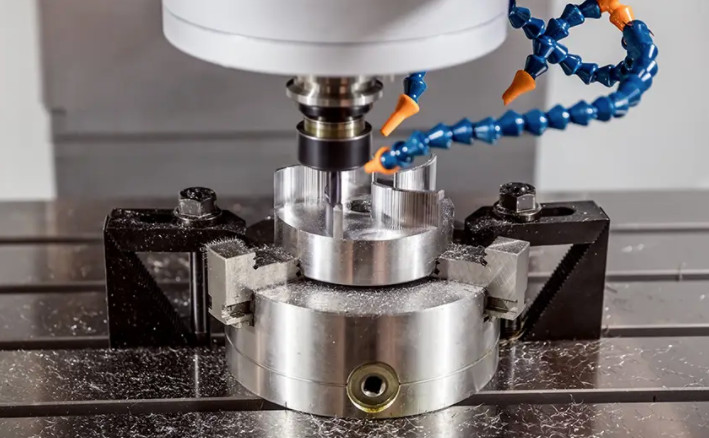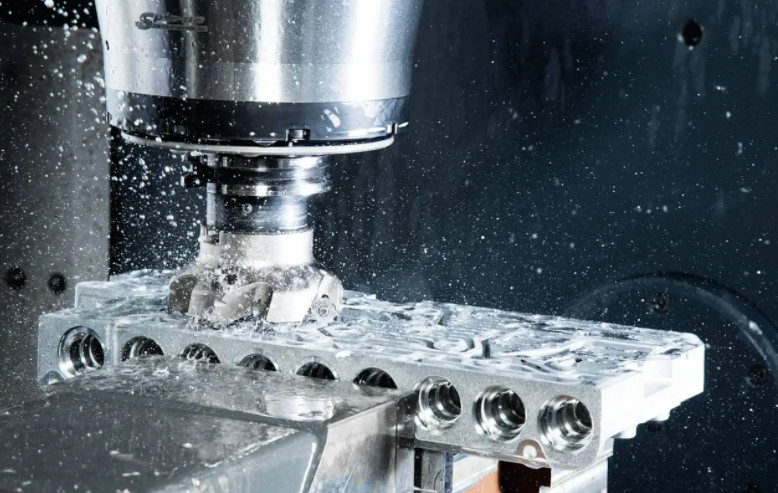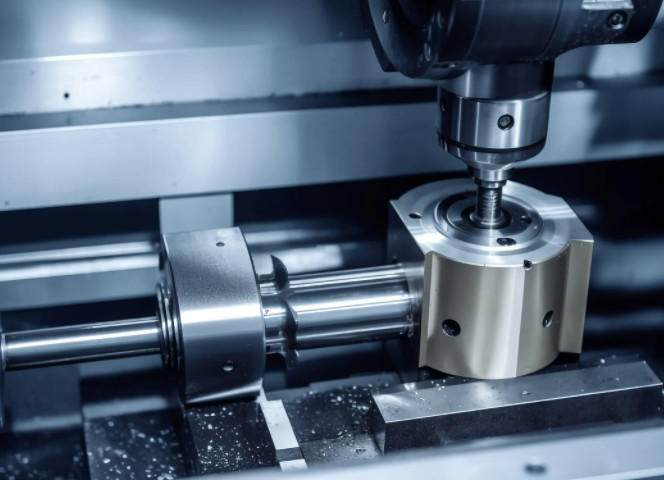Metal CNC machines are critical tools in modern manufacturing, offering unmatched precision and efficiency for producing complex metal parts. These computer-controlled systems utilize advanced software and hardware to shape metals with high accuracy, catering to industries such as aerospace, automotive, and medical device manufacturing. This article provides a comprehensive overview of metal CNC machines, covering their functionality, key features, applications, and technical specifications to help you understand their role in industrial production.
Understanding Metal CNC Machines
Metal CNC (Computer Numerical Control) machines are automated tools that use pre-programmed software to control cutting, drilling, milling, and turning processes on metal workpieces. By interpreting digital designs, typically in CAD (Computer-Aided Design) or CAM (Computer-Aided Manufacturing) formats, these machines execute precise movements to create components with tight tolerances. They are essential for producing parts that require consistency, repeatability, and intricate geometries.
The primary components of a metal CNC machine include the control unit, spindle, tool turret, worktable, and coolant system. The control unit processes G-code instructions, directing the machine’s movements. The spindle rotates cutting tools at high speeds, while the tool turret allows for quick tool changes to perform multiple operations. The worktable holds the workpiece securely, and the coolant system manages heat generated during machining to maintain tool and material integrity.

Key Features of Metal CNC Machines
Metal CNC machines are designed with advanced features to meet diverse manufacturing needs. Below are some of the most critical features that enhance their performance:
- High Precision: Capable of achieving tolerances as tight as ±0.001 inches (±0.025 mm), ensuring exact replication of designs.
- Multi-Axis Capability: Machines with 3, 4, or 5 axes allow for complex geometries and reduced setup times.
- Automated Tool Changers: Enable seamless transitions between tools, increasing efficiency for multi-step processes.
- High-Speed Spindles: Operate at speeds ranging from 8,000 to 30,000 RPM, depending on the machine model, for rapid material removal.
- Advanced Control Systems: Feature user-friendly interfaces and support for G-code and M-code programming.
- Coolant Systems: Integrated systems maintain optimal temperatures, extending tool life and improving surface finishes.
These features collectively ensure that metal CNC machines can handle a wide range of metals, including aluminum, steel, titanium, and brass, with consistent quality.
Applications of Metal CNC Machines
Metal CNC machines are versatile, serving various industries by producing components with high precision and durability. Key applications include:
- Aerospace: Manufacturing turbine blades, engine components, and structural parts with tight tolerances for safety and performance.
- Automotive: Producing engine blocks, transmission parts, and custom fittings for vehicles.
- Medical: Crafting surgical instruments, implants, and prosthetics with biocompatible materials like titanium.
- Electronics: Creating precise enclosures, heat sinks, and connectors for electronic devices.
- Industrial Equipment: Fabricating gears, shafts, and other heavy-duty components for machinery.
Each application leverages the machine’s ability to handle specific materials and produce intricate designs, making CNC machines indispensable in modern production.
Technical Specifications of Metal CNC Machines
Understanding the technical specifications of metal CNC machines is crucial for selecting the right equipment for specific tasks. Below is a table summarizing typical specifications for a mid-range metal CNC machine:
| Specification | Details |
|---|---|
| Spindle Speed | 8,000–20,000 RPM |
| Axis Configuration | 3-axis (optional 4/5-axis upgrade) |
| Table Size | 40 x 20 inches (1016 x 508 mm) |
| Tool Capacity | 20–30 tools |
| Max Workpiece Weight | 1,000 lbs (453 kg) |
| Power Requirement | 220V, 3-phase, 30A |
| Control System | Fanuc, Siemens, or Haas CNC |
| Tolerance | ±0.001 inches (±0.025 mm) |
These specifications vary based on the machine’s size, model, and intended use. For example, high-end 5-axis machines may offer spindle speeds up to 30,000 RPM and support larger workpieces, while compact models are suited for smaller, precision-focused tasks.
Types of Metal CNC Machines
Metal CNC machines come in various types, each designed for specific machining processes. The most common types include:
- CNC Milling Machines: Use rotating tools to remove material from a stationary workpiece, ideal for creating slots, holes, and flat surfaces. They typically feature 3 to 5 axes for versatility.
- CNC Lathes: Rotate the workpiece against a stationary cutting tool, suitable for cylindrical parts like shafts and bushings. They are commonly 2-axis machines but can include live tooling for added functionality.
- CNC Plasma Cutters: Use a plasma torch to cut through conductive metals, often used for large-scale cutting of sheet metal.
- CNC Laser Cutters: Employ a laser beam for high-precision cutting and engraving, particularly effective for thin metal sheets.
- CNC EDM (Electrical Discharge Machining): Uses electrical sparks to erode material, ideal for hard metals and intricate shapes.
Each type is optimized for specific tasks, allowing manufacturers to choose the machine that best fits their production needs.
Materials Processed by Metal CNC Machines
Metal CNC machines are designed to work with a wide range of metals, each with unique properties that influence machining parameters. Common materials include:
| Material | Properties | Applications |
|---|---|---|
| Aluminum | Lightweight, corrosion-resistant, easy to machine | Aerospace parts, automotive components |
| Steel | High strength, durable, versatile | Industrial machinery, structural components |
| Titanium | High strength-to-weight ratio, corrosion-resistant | Medical implants, aerospace components |
| Brass | Good machinability, corrosion-resistant | Electrical connectors, decorative parts |
| Stainless Steel | Corrosion-resistant, high durability | Surgical tools, food processing equipment |
Selecting the appropriate material depends on the application, required strength, and environmental factors. CNC machines can be programmed to adjust cutting speeds, feeds, and tool types to suit each material’s properties.
Benefits of Using Metal CNC Machines
Metal CNC machines offer several advantages that make them a preferred choice in manufacturing:
- Precision and Accuracy: Achieve tight tolerances and consistent results, reducing material waste and rework.
- Efficiency: Automated processes and high-speed machining reduce production times compared to manual methods.
- Versatility: Capable of producing a wide range of parts, from simple to complex, across various industries.
- Repeatability: Ensure identical parts in high-volume production, critical for industries like automotive and aerospace.
- Reduced Labor Costs: Automation minimizes the need for manual intervention, lowering labor expenses.
These benefits translate to cost savings, improved product quality, and faster time-to-market for manufacturers.
Choosing the Right Metal CNC Machine
Selecting a metal CNC machine requires careful consideration of several factors:
- Production Needs: Determine the types of parts, materials, and production volumes to select a machine with appropriate capabilities.
- Axis Configuration: Choose between 3, 4, or 5-axis machines based on the complexity of the parts.
- Spindle Speed and Power: Higher speeds are suited for softer metals like aluminum, while more powerful spindles are needed for harder materials like titanium.
- Control System: Opt for a reliable and user-friendly system, such as Fanuc or Siemens, for ease of operation.
- Budget: Balance initial costs with long-term benefits, considering maintenance and operational expenses.
Consulting with manufacturers or suppliers can help identify the best machine for specific applications.

Maintenance and Operation Best Practices
Proper maintenance and operation are essential for maximizing the lifespan and performance of metal CNC machines. Key practices include:
- Regular Maintenance: Schedule routine checks for spindle alignment, tool wear, and coolant levels to prevent downtime.
- Operator Training: Ensure operators are trained in programming, tool setup, and safety protocols to minimize errors.
- Software Updates: Keep control software updated to leverage new features and improve performance.
- Cleanliness: Maintain a clean work environment to prevent debris from affecting machine components.
Adhering to these practices ensures consistent performance and reduces the risk of costly repairs.
Frequently Asked Questions
What is a metal CNC machine?
A metal CNC machine is an automated tool that uses computer programming to control cutting, drilling, and shaping processes on metal workpieces, ensuring high precision and efficiency.
What materials can a metal CNC machine process?
Metal CNC machines can process materials like aluminum, steel, titanium, brass, and stainless steel, adjusting parameters to suit each material’s properties.
How precise are metal CNC machines?
Metal CNC machines can achieve tolerances as tight as ±0.001 inches (±0.025 mm), depending on the machine and material.
What industries use metal CNC machines?
Industries such as aerospace, automotive, medical, electronics, and industrial equipment rely on metal CNC machines for precision manufacturing.
